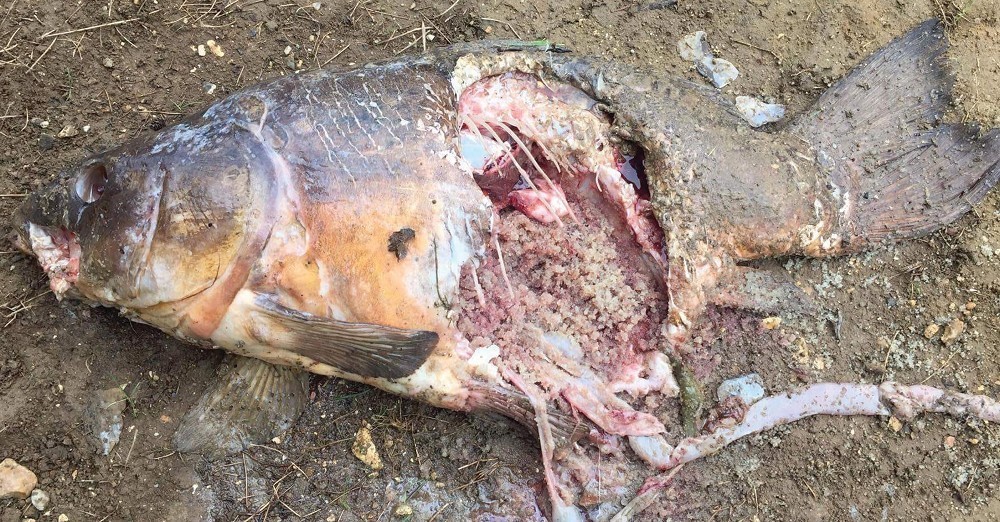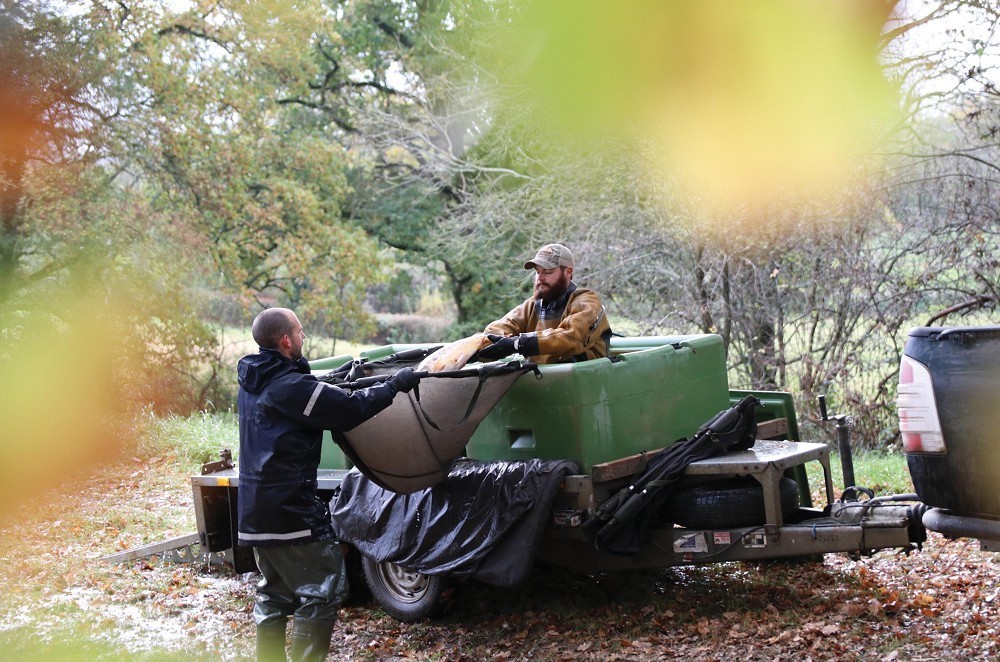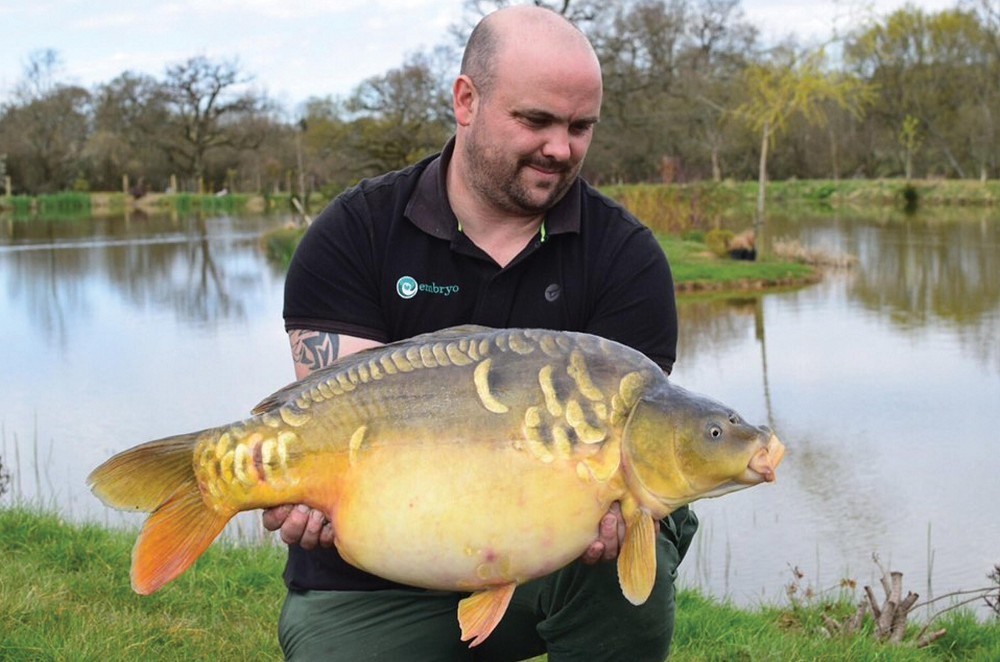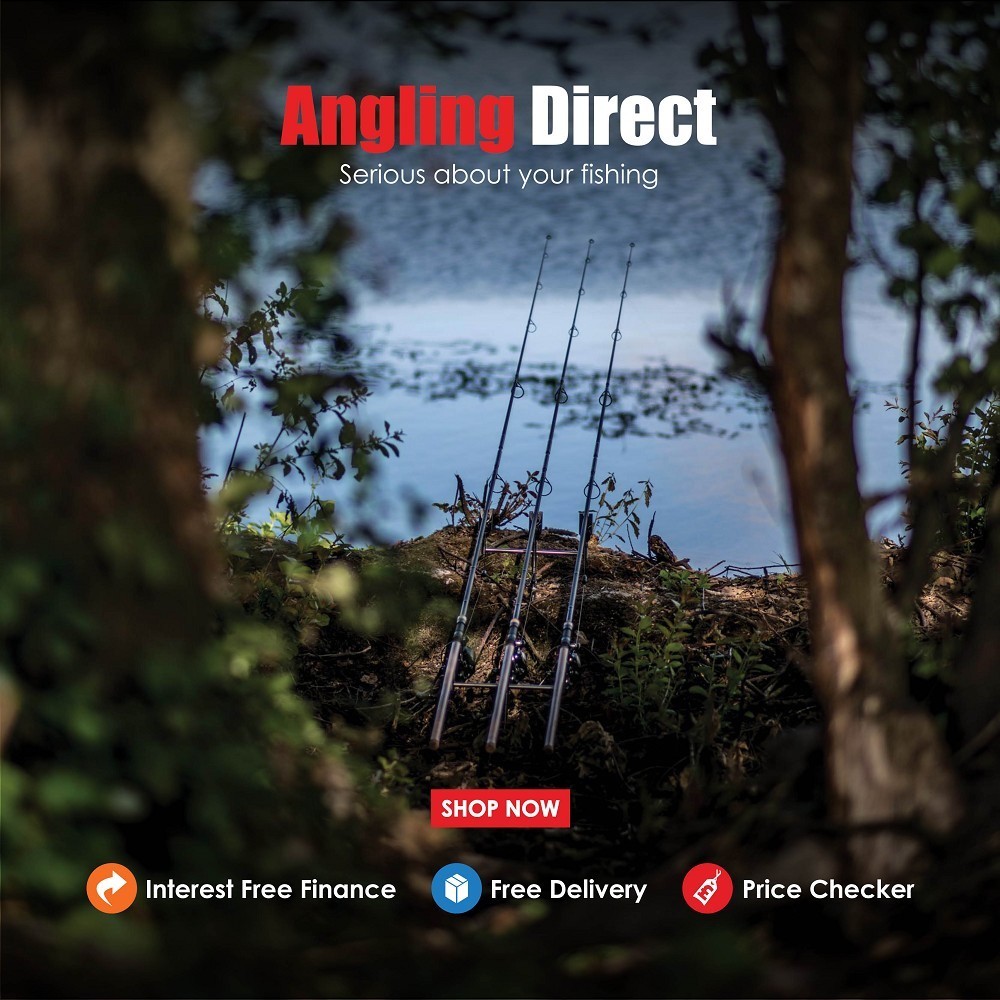
The truth about... otters!
Whilst the below image is shocking and disturbing, it tells a story of what's really happening all across the UK right now
Welcome to the third article in my mini-series: The Truth About… Here I am going to look at otters. I feel suitably placed to write about otters for several reasons: in the last few years I have watched three carp fisheries that I hold very dear being destroyed through otter predation. I jointly run a large carp farming business that is vulnerable to otter predation. I am a lifelong carp angler who is hugely enthusiastic about this sport. Additionally, and very significantly, I am also a passionate conservationist, fishery scientist and consultant.
With this background I hope that in the next 1,000 or so words I can explain a bit about these creatures’ biology and background, and examine why I believe that the subject of the otter is one which as anglers we need to take VERY seriously. This is a strongly emotive subject and it is also a complex one. Both anglers and conservationists have passionate views and the arguments for and against otters could fill a whole magazine.
Background And Recovery
The otter is a large, predominately nocturnal predator, with an adult male weighing approximately 10-12kgs. It is an energetic creature which is superbly adapted to living and hunting in and around the aquatic environment. Otters are tremendous travellers and a male can move over a 20-mile territory in as little as two nights. Its diet consists predominately of fish, but it will also eat other animals that live in and around the water such as ducks, coots, moorhens, crayfish, frogs, voles and even rats! It will readily tackle carp in every type of UK venue ranging from huge, low stock, windswept gravel pits, right down to heavily stocked farm ponds.
Fortunately, evidence suggests that otters find carp a tricky meal to catch in the summer, when water temperatures are high and the fish are very active. However, during the winter months when carp are more lethargic and spend long periods being inactive, they become a far more achievable target. I rarely receive pictures of carp that have been killed or damaged by otters throughout the summer months. Sadly, as soon as the first few frosts have knocked the water temperature down this situation changes. At the time of writing (mid-December) I am receiving between two and five e-mails per week from fisheries asking my opinion of pictures of dead or damaged carp… most of these are the result of otters.
Otters are highly territorial animals; the size of their territories being governed by available habitat and food supplies. If there is an abundance of suitable habitat for the animals to live amongst and fish are plentiful within an area, then territories will be smaller than in those areas where food is scarcer. Otters are relatively short-lived animals with a life expectancy of only about five-years in the wild. Most female otters will only breed once or twice in their lives, producing two or three cubs which will then stay dependent on their mother for more than a year.
A century ago otters would have ranged up and down most of the river catchments in the British Isles, living in a diverse variety of wetland habitats ranging from ditches and streams, to ponds and lakes as well as along the coast. Once having been very widespread throughout the British Isles, otter numbers began to decline dramatically in the 1950s. By the 1970s the situation for the otter had become a very serious one. In the space of just thirty years a once widespread animal had seen its numbers pinned back to just a few fragmented populations in Scotland, Wales and the far south west of England.
The main reason for this sudden decline was eventually identified as being the widespread application of a group of chemicals used in farming called organochlorine pesticides. These chemicals were widely used in agriculture to treat a whole host of pests and as such found their way into natural food chains via several different routes. Fortunately, once the damaging impact that this group of chemicals was having on British wildlife had been identified, their use in this country was banned. In addition to this, a ban on the hunting of otters was enforced in 1978 to protect the fragile population that remained at that time.
Since 1980, the otter has made a strong recovery and is steadily re-colonising many of the areas that it would have previously inhabited prior to its population crash. This recovery is clearly demonstrated through the results of the Fifth Otter Survey of England 2009-2010. The results shown in this survey make fascinating reading and clearly show that the otter population has bounced back very successfully from the brink of extinction in less than thirty years. Although it is impossible to put a figure on the number of otters currently present in England, current estimates by those with great understanding of the species suggest that there are several thousand individuals spread across the country.
 A VS Fisheries stunner. It is expensive to buy fish to replace the ones the otter has eaten… put a fence up PLEASE!
A VS Fisheries stunner. It is expensive to buy fish to replace the ones the otter has eaten… put a fence up PLEASE!The Bigger Picture
Although as anglers, fishery managers and carp farmers we may see the otter as an aggressive predator that kills our beloved carp it is important and perhaps vital to look at the wider picture for a moment. The return of this most iconic emblem of British wildlife to most of England is widely acclaimed as a huge conservation success story. Enormous efforts have been made by a wide variety of conservation groups to aid the rehabilitation of the otter and although as anglers we may not be so happy to see them, the positive results recently published in the Fifth Otter Survey have been welcomed with tremendous excitement by a great many people.
Otters are amongst the most highly protected animals in Europe, currently being covered by the Conservation of Habitats and Species Regulations (2010), with additional protection under the Wildlife and Countryside Act (1981). This makes any interference of them highly illegal.
The UK population holds the otter in great affection. Most people will of course never see one but through a wide range of television programs the public is well aware of the otter and thinks they are smashing creatures. They tick all the boxes of course: this is a highly character-full and charming animal; it is playful and lively and that makes it compulsive TV viewing. I do believe that we can show the public the other side of the otter argument by demonstrating the damage they can do to fisheries and people’s livelihoods but we must accept that they are here to stay.
What Can We Do?
Angling has evolved dramatically in the last fifty years during a period when the otter was absent from huge areas of our country. The specimen angling scene has developed and we now have a situation where many anglers are fishing for very large recognisable carp, which are highly valued, both financially and sentimentally. A significant number of reclaimed gravel pit complexes have been stocked with carp. Fishery managers and angling clubs have put the fish in these environments and now we must look after them and protect them if we want them to survive.
We need to protect our fisheries if we want them to contain large fish. If you want to keep chickens, you need to protect them from the fox, and the same is true of carp stocks and otters. Many commercial carp fisheries and a fair number of syndicate venues are now fenced which is fantastic news, however it seems to me that the majority of club waters remain unfenced and therefore at risk of predation.
If you are sat reading this at a fishery that is unfenced, then I am afraid that otters are going to visit your fishery soon. It may not be this winter or the next one but at some stage an otter will slip into the lake and sadly the first evidence most anglers are likely to notice that their fishery has been visited is a partially eaten carp lying dead in the margins.
The only fail-safe way of stopping this happening is to prevent their access and the way to do that is through suitable fencing. It is likely that otter numbers are going to continue to rise in the next ten years and those fisheries that have up until this point not suffered any predation will in-turn see fish losses. So, if you are sat reading this at a club venue that is not fenced PLEASE make sure that you attend the next AGM and put some pressure on the committee to fence the club’s lakes.
I frequently receive pictures of carp which have been killed by otters and when I ask about fencing I normally hear that it is too expensive for the club or, “it would be impossible to fence the site.” Currently, a 20lb carp is worth about £500 and a 30lb carp might be worth £2,500. So, if the otter was to take 20 fish of 20lbs from your fishery you would have lost £10,000 worth of stock! This is a huge amount of money to lose and these fish would take time and effort to replace.
A great friend of mine recently fenced two lakes with a total area of approximately ten-acres, in this case the fence cost him approximately £10,000. It was not the best otter fence I have ever seen BUT it will do the job and he will be able to sleep easy knowing that his rapidly growing carp stock is safe from predation.
Help Is At Hand
The good news is that there is now some help available. Embryo Angling Habitats was founded in summer 2014 by Danny Fairbrass. One of Embryo’s main functions is to help clubs protect their lakes from the increasing threat of otter predation. Embryo has already fenced numerous lakes since it was formed and offers to angling clubs a cut price fencing service, as well as excellent advice on the best ways to fence fisheries. The team at Embryo are fantastic at working around the problems associated with fencing fisheries and can give excellent tips on how to screen inlets or outlets and how to put in gates etc. In their view, it is possible to fence every fishery, irrespective of size, shape and location.
For further advice regarding Embryo, please visit their excellent website embryoangling.org or send them an e-mail to info@embryoangling.org.
I hope this piece has been of interest and has been thought-provoking. Doing nothing is not an option – fence them in and keep them safe or they will be gone forever.





